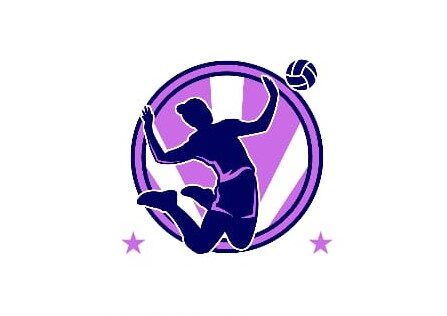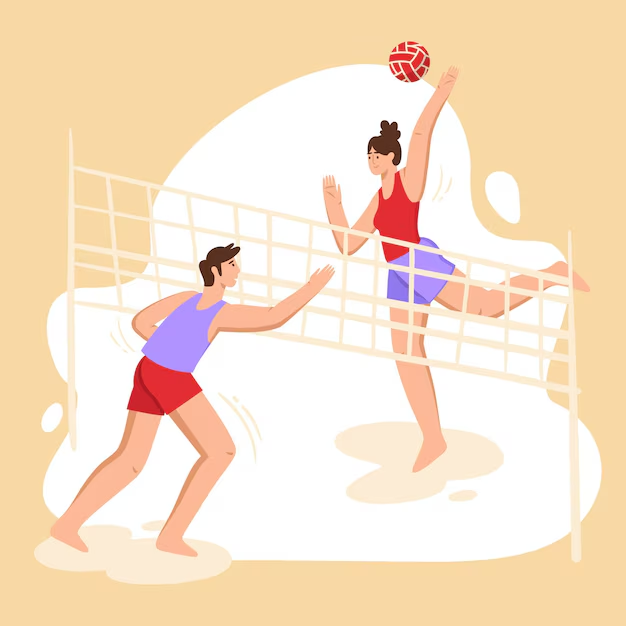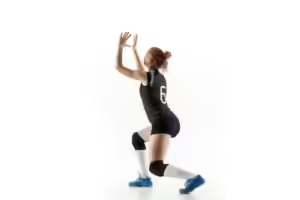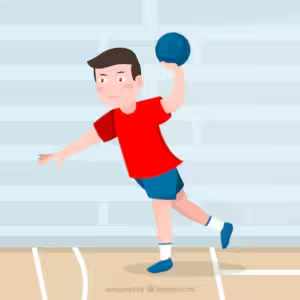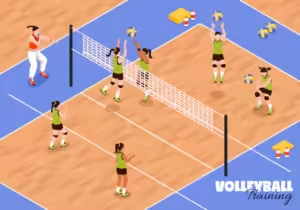Volleyball is a dynamic and strategic sport, where each position plays a crucial role in the team’s success. Understanding the responsibilities and skills required for each position can enhance your appreciation of the game and improve your performance on the court. Let’s delve into the key positions in volleyball.
Setter
The setter is often considered the quarterback of the volleyball team. This player is responsible for orchestrating the offense by delivering accurate sets to the hitters. A setter must have excellent hand-eye coordination, quick decision-making skills, and the ability to read the opposing team’s defense. They are pivotal in transitioning the team from defense to attack and must be adept at communicating with teammates to execute plays effectively.
Key Responsibilities:
- Setting: Delivering accurate sets to hitters.
- Leadership: Directing the offensive play and making strategic decisions.
- Defense: Playing in the back row, often involved in blocking.
Skills Needed:
- Agility: Quick movements and reflexes to reach the ball.
- Communication: Clear and precise interaction with teammates.
- Strategic Thinking: Ability to anticipate opponents’ moves.
Outside Hitter
The outside hitter, also known as the left-side hitter, is a versatile player who plays both front and back row. This position requires a combination of attacking, blocking, and defensive skills. Outside hitters are often the primary attackers and must be able to deliver powerful and accurate spikes.
Key Responsibilities:
- Attacking: Performing spikes from the left side of the court.
- Defense: Receiving serves and playing in the back row.
- Blocking: Assisting in blocking against the opponent’s hitters.
Skills Needed:
- Versatility: Ability to perform well both in front and back row.
- Powerful Spiking: Strong hitting to penetrate the opponent’s defense.
- Passing: Accurate passing to facilitate effective plays.
Opposite Hitter
The opposite hitter, or right-side hitter, is typically one of the main offensive weapons on the team. Positioned opposite the setter, this player must be capable of attacking from the front and back row. They need to be strong blockers and often take on a significant defensive role.
Key Responsibilities:
- Attacking: Delivering spikes from the right side of the court.
- Blocking: Strong presence at the net to counteract the opposing team’s best hitters.
- Serving: Often required to perform powerful serves.
Skills Needed:
- Strength: Ability to hit hard and block effectively.
- Adaptability: Switching between attacking and defensive roles smoothly.
- Coordination: Excellent timing for spikes and blocks.
Middle Blocker
The middle blocker, or middle hitter, is the team’s first line of defense against opponent attacks. Positioned at the net, they are responsible for blocking the opposing team’s hitters and quick attacks. Middle blockers must be fast and have excellent jumping skills to effectively cover the court.
Key Responsibilities:
- Blocking: Primary blocker against opponent’s attacks.
- Quick Attacks: Executing fast-paced hits when set by the setter.
- Defense: Covering tips and quick plays near the net.
Skills Needed:
- Height and Jumping Ability: Essential for effective blocking and attacking.
- Speed: Quickness to move laterally along the net.
- Timing: Precise timing for jumps and hits.
Libero
The libero is a specialized defensive position focused on receiving serves and playing in the back row. This player is distinguishable by their different-colored jersey and cannot attack the ball above the net’s height. The libero’s primary role is to enhance the team’s defense and passing accuracy.
Key Responsibilities:
- Serve Receive: Receiving serves and making accurate passes.
- Defense: Covering the back row and digging attacks.
- Ball Control: Ensuring smooth transitions from defense to offense.
Skills Needed:
- Agility: Quick movements to cover the backcourt.
- Ball Handling: Exceptional control and precision in passing.
- Defensive Awareness: Anticipating opponent’s attacks.
Defensive Specialist
The defensive specialist is similar to the libero but has more flexibility in terms of rotation and attacking. This player is often substituted in for serving and defensive purposes, providing the team with enhanced backcourt stability.
Key Responsibilities:
- Defense: Specializes in digging and receiving.
- Serving: Often brought in for strategic serves.
- Versatility: Ability to play multiple back-row positions.
Skills Needed:
- Defensive Skills: Strong digging and passing abilities.
- Adaptability: Quick to adjust to different positions and situations.
- Serving Consistency: Reliable serving under pressure.
Practice Your Skills at the Hoover Met Complex
The Hoover Met Complex offers a fantastic environment for volleyball players position to hone their skills. With state-of-the-art facilities, players can practice all aspects of the game, from setting and hitting to serving and defense. Whether you are a beginner or an experienced player, the complex provides opportunities for development and improvement.
Benefits:
- Advanced Facilities: Access to top-notch courts and equipment.
- Coaching: Availability of skilled coaches for personalized training.
- Community: A supportive environment fostering growth and teamwork.
Tips for Practicing:
- Focus on Fundamentals: Regularly practice basic skills like passing and serving.
- Drills: Engage in drills specific to your position to enhance your performance.
- Game Simulation: Participate in practice matches to apply skills in a game-like setting.
By understanding these volleyball positions and practicing diligently, players can elevate their game and contribute significantly to their team’s success. Whether playing competitively or recreationally, mastering these roles and skills is key to enjoying and excelling in volleyball.
FAQs:
- What is the role of a setter in volleyball?
- The setter orchestrates the offense by setting up plays and delivering accurate sets to hitters, acting as the team’s strategic leader.
- How does an outside hitter contribute to a volleyball team?
- An outside hitter is versatile, responsible for attacking, blocking, and playing defense, often being the primary offensive weapon.
- What distinguishes a libero from other players?
- The libero focuses on defense and serve receive, wearing a different-colored jersey and not attacking the ball above net height.
- What skills are essential for a middle blocker?
- Middle blockers need height, jumping ability, speed, and precise timing to effectively block and execute quick attacks.
- Why practice at the Hoover Met Complex?
- The Hoover Met Complex offers advanced facilities, skilled coaching, and a supportive environment for players to improve their volleyball skills.

With your 6 years of experience as an article writer and shoes review expert, you’re well-positioned to provide insightful and detailed reviews.
